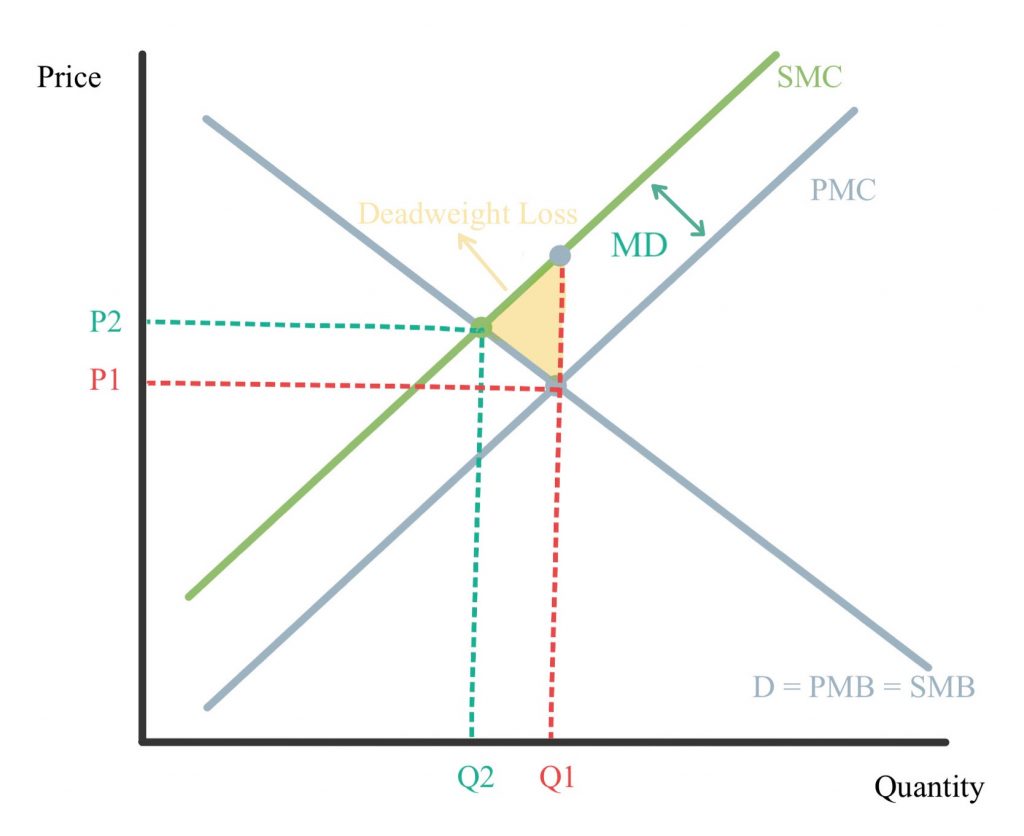Externalities are the external impacts incurred by an economic agent not involved in a transaction, which can be either a cost (negative) or a benefit (positive) and occur from either the production or consumption of a good or service. Thus, because externalities lead to a difference in the public impact from the private impact, a deadweight loss exists. A deadweight loss is an excess burden created by the lost economic efficiency when the socially optimal quantity of a good or service is not produced or consumed. To understand how social planners correct for this form of a market failure, an explanation of externalities as an economic concept is first necessary.
Positive externalities in production occur when producing a good or service results in benefits for others, like research and development projects which lead to knowledge and information enjoyed by others beyond the producer that funded the R&D. By not accounting for these benefits, there is a shortage or under production of the good or service. On the other hand, negative externalities in production occur when producing a good or service results in costs for others, like the logging and timber industry’s byproduct of deforestation which leads to fewer trees to absorb carbon dioxide and disrupts feedback loops, thus contributing to global warming. By not accounting for these costs, there is a surplus or over production of the good or service.
Graphically, a negative externality in production will exist when there is a difference between the social marginal cost (SMC) and the private marginal cost (PMC), which is the marginal damage (MD).

Positive externalities in consumption occur when consuming a good or a service results in benefits for others, like the purchase of an electric vehicle which reduces pollution or education which not only increases the earnings of the “consumer” but also spills over benefits to society in general like in the form of lower crime rates. By not accounting for these benefits, there is a shortage or under consumption of the good or service. On the other hand, negative externalities in consumption occur when consuming a good or service results in costs for others, like passive smoking or noise pollution from a neighbor hosting a party. By not accounting for these costs, there is a surplus or over consumption of the good or service.
Economists will oftentimes argue in favor of “internalizing the externality” in the form of a government intervention like a tax, subsidy, or regulation so that the price of the good or service fully reflects its external impacts. This phrase is popular, but New York University’s Professor Güney Işıkara poses the question “what separates the external from the internal?” in a way that begs economists to re-examine where they decide to draw the border between the private and public impact and consider the implications of that decision.
